In northern Japan, on the main island of Honshu, and the northern-most island of Hokkaido are where the Ainu, Japan's little-known indigenous people, live.
They've lived here for tens of thousands of years. But you'd be forgiven for not having heard of them before.
In Japan's recent past they were repressed and sidelined.
But things are changing, and the significance of the Ainu to Japan's history and their distinctive culture are now being celebrated.
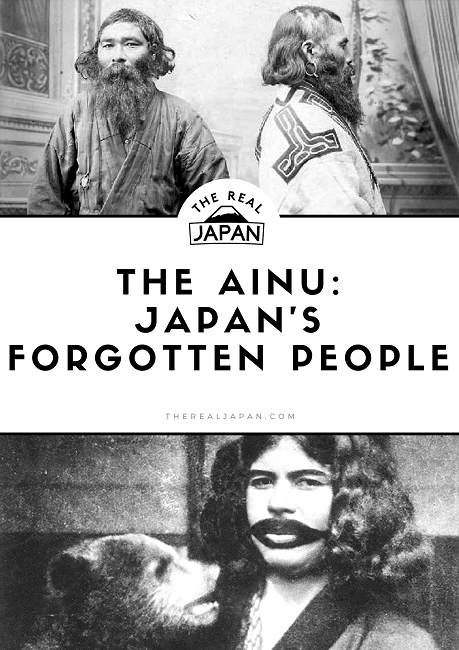
The Ainu: Japan's Forgotten Indigenous People
by Rob Dyer
I have a short video introduction to the Ainu people if you prefer video over blog posts. But the blog post that follows goes into more detail on the Ainu people and their traditions (including another video about Ainu wood carving culture).
VIDEO: The Ainu – Japan’s Forgotten People
Where the Ainu settled
The second time I went to Japan (in 2001) was when I first I went to Hokkaido. I loved it.
Hokkaido is Japan's northern-most island, not far from Siberia in Russia.
Before recorded history, Hokkaido was settled by the Ainu - Japan's forgotten indigenous people.
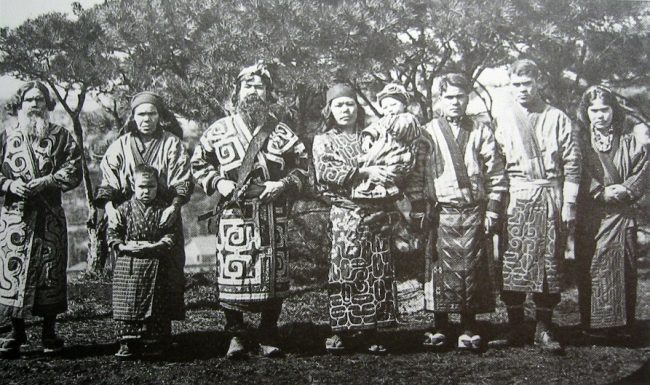
Long-suffering discrimination
But like the native people of America, Australia and other countries, the Ainu have long suffered discrimination.
They are physically and culturally very different from the Japanese.
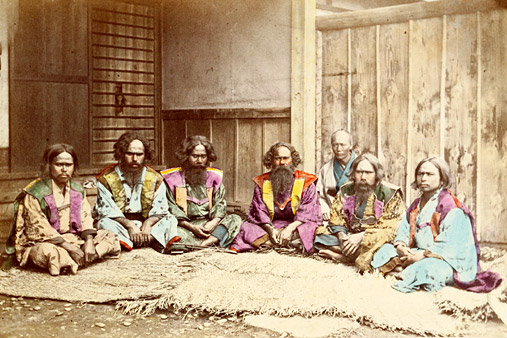
Know for having a lot of body hair, the men have beards which they leave unshaven. While women’s mouths are tattooed.
Arctolatry - the worship of bears
These people are traditionally hunter-gatherers. They have their own language, but fewer than 100 people still speak it, and it is classified as endangered.
They practice arctolatry - the worship of bears. They hunted them for food but also kept them as pets.
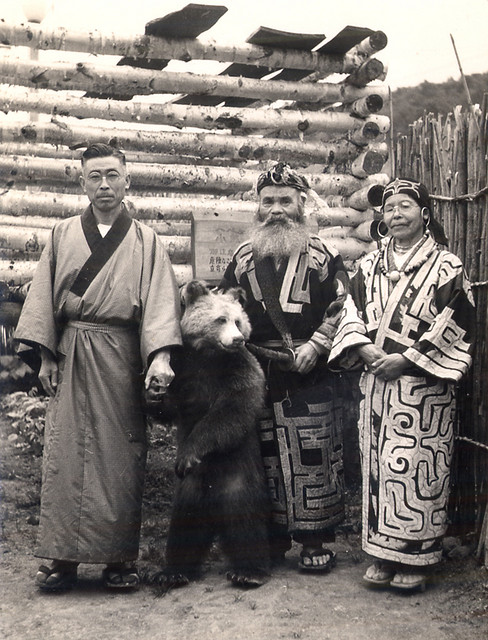
Meeting Ainu at the Marimo Festival
Every autumn, on the shores of Lake Akan in Hokkaido, the marimo festival takes place, and the Ainu people play a key part in the celebrations.
The festival began in 1950 as a means to save the endangered marimo algae found in Lake Akan. Marimo are giant green balls of algae (growing up to 30cm in diameter).
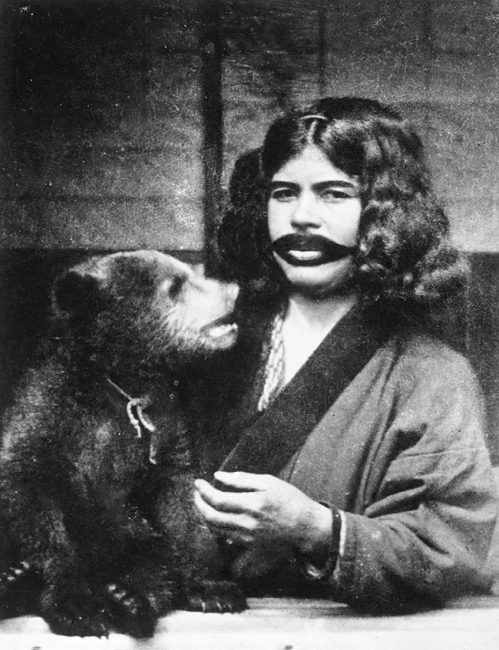
The highlight of the three-day festival is a 1,000 torch parade. It's a rare opportunity to see, firsthand, the customs of the Ainu, their traditional dance, and to hear their folk songs.
VIDEO: Ainu Wood Carving Culture
Akan Ainu Village (Kotan)
In East Hokkaido, within the Akan region, lies a kotan, or village, that serves as the dwelling place for the Ainu. This village, known as Akan Ainu Kotan, boasts a permanent venue named the Lake Akan Ainu Theater, where traditional and age-old ceremonial dances come to life.
Akan-Yukar: Lost Kamuy Ainu theatre
A kamuy is a spiritual or divine being in Ainu mythology, a term denoting a supernatural entity composed of or possessing spiritual energy. The Ainu people have many myths about the kamuy, passed down through oral traditions and rituals.
Since March 2019, a groundbreaking production titled "Akan-Yukar: Lost Kamuy" has been performed at Lake Akan Ainu Theater. This innovative showcase brings together accomplished creators from diverse realms such as digital art, sound design, and dance to tell the story of how wolves were hunted almost to extinction in the region.
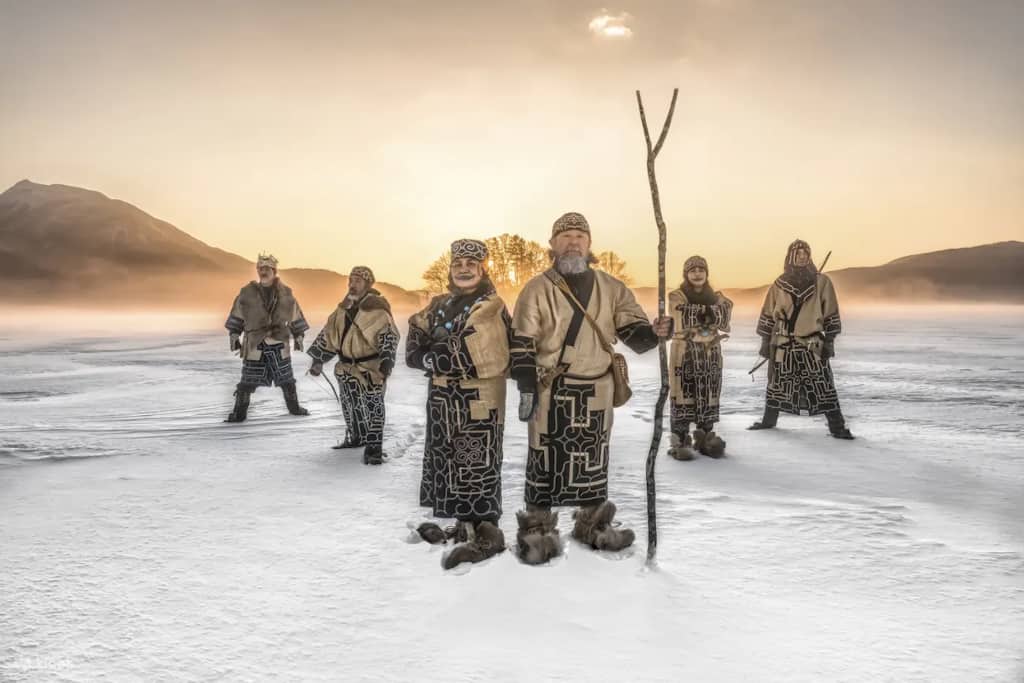
Performers from the theatre production Akan-Yukar: Lost Kamuy | Photo: Klook
Set against the backdrop of Akan Lake, the performance seamlessly blends ancient ceremonial dances with contemporary counterparts, integrating 3-D digital imagery and a 7.1 surround sound experience. The immersive spectacle is further heightened by the utilization of five cutting-edge projectors.
Tickets for this spectacular show can be booked via the Klook website.
Official Recognition by the Japanese Government
Today, only a few thousand of Japan's indigenous people remain.
After many decades of discrimination, in 2008 that the Japanese government officially recognised the Ainu as indigenous people, with their own language and culture.
Perhaps they will no longer be Japan's 'forgotten people'.
See also: Discovering Japan's Indigenous Ainu Culture at Japan House London
You may also like: Meeting An Itako - Spiritual Medium
Related: Onsen Tips For Those With Tattoos
Hokkaido Location Map
Did you know about the Ainu? What do you think about them and their history? And what do you think the future holds for them?
Please let me know by leaving a comment below...
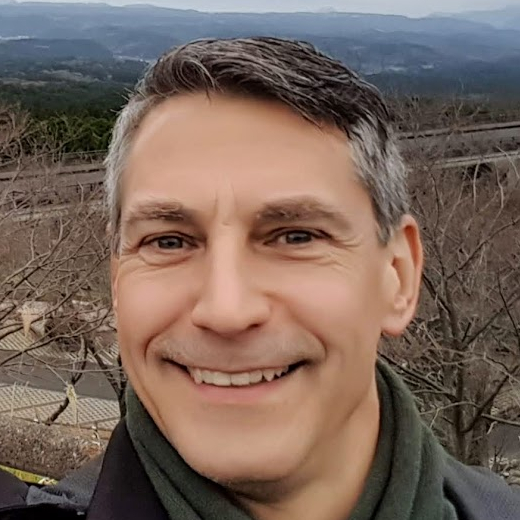
About the Author
A writer and publisher from England, Rob has been exploring Japan’s islands since 2000. He specialises in travelling off the beaten track, whether on remote atolls or in the hidden streets of major cities. He’s the founder of TheRealJapan.com.
Like this article? Then why not post this picture on social media:

Resources
Ainu Culture Experiences in Hokkaido
Akan Yukar "Lost Kamuy" Admission Ticket (with photo shooting & Performance)
Places to Explore Ainu Culture
Akanko Ainu Kotann - Akan Ainu Village
Ainu Culture & Heritage (Gate to Hokkaido)
Further Reading
Discovering Japan's Indigenous Ainu Culture at Japan House London
Finding Peace – 5 Extraordinary Zen Meditation Experiences
Supernatural Japan - A Beginner's Guide to Ghosts, Demons and Yokai Folklore


Thanks for sharing, I didn’t expect to stumble on your site. I’d learned about the Japanese culture and peoples and history way back about 7th grade, decades ago. I learned about the Ainu only after an anime series, the Golden Kamuy, which I hope that some indigenous peoples find hopeful or fair in its representation of them. Learned much about their connections to Ruso neighbors and how population have moved about. Thanks for sharing this, I’ll be looking for Cherry Blossoms next month and I doubt there will be any left if I don’t get up to Hokkaido, I’ll be checking out your website for more about visiting our Ainu global citizens.
Thanks for visiting and sharing your thoughts. I’ve heard of many people discovering the ainu via Golden Kamuy. I visited an excellent exhibition about ainu history and culture in London and it featured their depiction in modern media, including Golden Kamuy. You can read more about that here: https://www.therealjapan.com/5-captivating-osaka-day-trips-ainu-stories-japan-house/#t-1709804638361
The Okinawans and aboriginal Taiwanese share physical and cultural similarities with the Ainu people. They also suffered the same oppression from the Japanese incursion. Has your study included them?
Thanks for your thoughts Glenn. I have read a little about some similarities between the Okinawans and the aboriginal Taiwanese. Not surprising given their close geographical positions.
Very interesting to know that Japan has its indigenous people. Haven’t heard of it until now. Thanks for this vital information.
You’re welcome Wency – thanks for stopping by!
Love this. The Ainu appear similar to Siberian peoples, or Native Americans for the Pacific Northwest, such as the Haida.
Thanks Mario – glad to hear that.
So, we went to the Museum of the Peoples of the North in Hakodate. It covers the Ainu as well as the indigenous peoples of Sakhalin, the Aleutian islands, etc.
Lots of interesting exhibits of clothing, jewellery, tools, etc., some paintings by Japanese artists of the Ainu, some photographs too. I’d say about 50% of the exhibits had some English labelling.
Overall, very interesting if you’re interested in seeing more about these people.
Thanks for sharing that Mike. I’ve not yet visited the Museum so it’s helpful to read your thoughts on it, and good to hear a reasonable number of the exhibits had English translations.
I went to the Ainu Village back in 2004 with my Grandmother. It was amazing! I remember the Marimo as they reminded me of watching Hayao Miyazaki’s Totoro with the dust bunnies/soot sprites but that they lived of the sea. 🙂 I went to the theater to see the traditional dances. Their song Soran Nishi I learned in a Taiko group I was in so it was neat to see where and why the song originated. If I can find some photos I will post them 🙂
That sounds wonderful Vanessa – and to share the experience with your grandmother as well must have been special. I can see how the marimo reminded you of the soot sprites in Totoro! Please do share photos if you find them.
David Mack’s excellent graphic novel series “Kabuki” touches on Ainu ancestry. I highly recommend it. (Very adult content) https://en.m.wikipedia.org/wiki/Kabuki_%28David_W._Mack_comic%29
Thanks for sharing Kaye – I wasn’t aware of this one. (And thanks for flagging the adult content.)
For many years the Ainu were thought of as perhaps a people who originated from the area of Russia. It turns out, though, that they are the remnants of an earlier migration of Man out of Africa. As you can tell from the pictures, few of the surviving Ainu appear to be pure genetic stock: they have interbred with the Japanese.
I’ve heard the same theories as well Mike – seems they evolve over time as our knowledge and research improves.
met 2 Ainu medics working @ a UK Hospital in 1980
Wow – really Colin!? That’s remarkable!
They are the first people of the land and were discovers of the new. Bear people hunters and gathers similar to my people Maori who have roots to Taiwan travelled the whole Pacific to settle in Aotearoa land of the long white cloud we are not indigenous nor native we are Maori even though this word is suspect dominated by old english laws and governments.
Interesting to read your thoughts David on the similarities with your Maori people. Thanks for sharing.
https://en.m.wikipedia.org/wiki/Bronis%C5%82aw_Pi%C5%82sudski Bronislaw Piłsudski – Study of Ainu
Thanks for sharing Grzegorz. It seems the influence of and interest in the Ainu reaches far beyond Japan.
I’m Japanese with Ainu blood. I visited Bilbao back in 1990 .. as a workvisit. Beautiful City and I noticed something strange, since I never heard about the Basque language before..I recognized too many words, especially when written down. To me it was no coincidence and too similar to ignore. There is something going on, between Euskara and Ainu.. The Ainu and Basque language share too many similarities to ignore. The Japanese took many Ainu words. That’s why people also notice the similarities between Basque and Japanese. Even between Basque and languages from the Altaic family. Anyway the Ainu were living in Japan thousands of years before the Ainu were overrun by Asian / Mongolian tribes and intermixed. So before anybody claims it is nonsense because the Ainu are genetically closer to Asians than Europeans, think twice.. since the Ainu were originally Caucasian. So science claims it immediately as pseudoscience.. because here we have something really odd going on, the Basque and the Ainu, separated 10.000 Kilometers from each other, but still sharing so many words and meanings..it can’t be ignored. But, western science ‘we know everything, because we were the first who explored the world’ is too stubborn and too ignorant. What if the Basque and the Ainu migrated from a common source. Wait, that means ancient ‘stupid’ people were already traveling the oceans. Now here we have a big problem says modern science.. nah.. lets call it pseudoscience and we’re good. History of human civilization and history of mankind is full of gaps.
That’s fascinating!
I’m with you. I would not be surprised to learn that there is some ancient historical connection that explains the language similarities.
There are several places like the Basque region, Finland, and others in which remants of precursor languages exist. The Japanese are thought to be derived from one of the ancient six kingdoms of Korea that was perhaps driven out of Korea and went to Japan. The language is different from today’s Korean language (and were perhaps a separate people), but the Japanese are genetically shown to be the same as Koreans.
That’s an interesting idea about the Japanese being descendents from an ancient Korean kingdom.
maybe the origins goes way back when the continents were unified in a single piece of land …(Pangaea ) ?
Perhaps it could be Violeta – I have read the same theory elsewhere when looking into the Ainu’s origins.
Your story reminds me so much of observations of a native Peruvian tour guide we spent a week with, the Ketchen language and society of Peru shares so many root sounds and words with Japanese, and we know anyone could have crossed the land bridges to the Americas some 11k or maybe 23k years ago. Much like Doggerland off of today’s European shores. Thanks for sharing!
I do know about the Ainu, but I didn’t know about women tattooing their mouth. I would like to go to Hokkaido some day and learn more.
Thanks for the comment Jennifer.
Apparently, the women get their mouths tattooed from their early teens. As they get older the more they get added to their tattoos until they are considered a woman. Fascinating culture.
Hokkaido is a beautiful island and still untamed and wild in many parts. Well worth a visit if ever you get the opportunity.